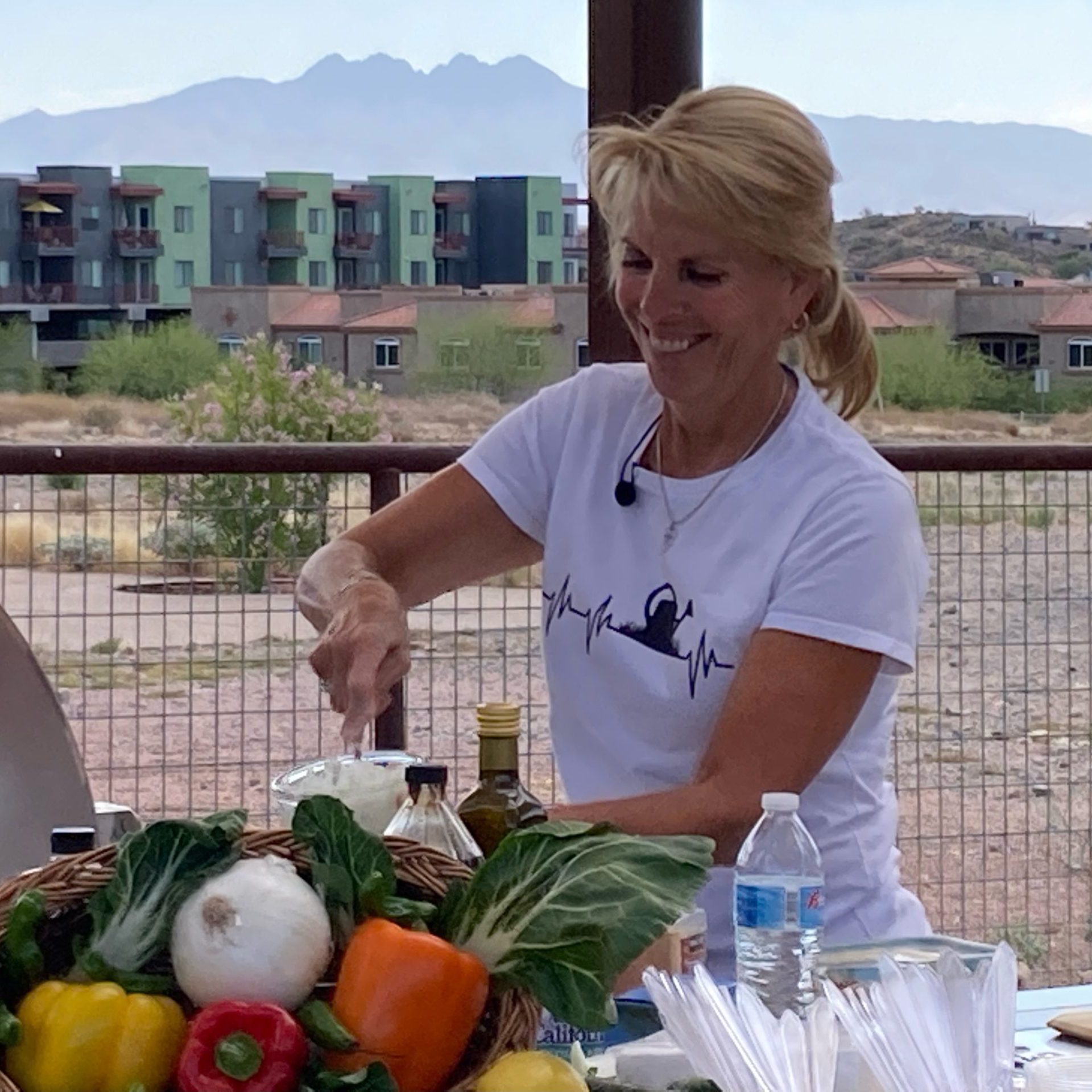
Membership Newsletter – Volume 15 March 2024
Welcome to Our March Edition! This Month’s Topic – Mercury In Fish…
Handling kitchen knives safely has to become your first priority and second nature for you in your kitchen. If you plan to engage in a healthy eating lifestyle, then the odds are pretty good that you’ll be doing more of the cooking and prep work at home yourself. Knife accidents are common in household kitchens, but can be avoided if you use some good habits. I would be lacking in my duties as a teacher if I didn’t (at least briefly) touch on knife safety.
Knives are essential tools in any kitchen, but they can be dangerous if not used properly. To prevent injury and keep your kitchen running smoothly, it’s crucial to practice proper training and knife handling. Whether you’re a beginner or a seasoned cook in need of a refresher, here are some helpful tips to keep in mind for safe knife handling.
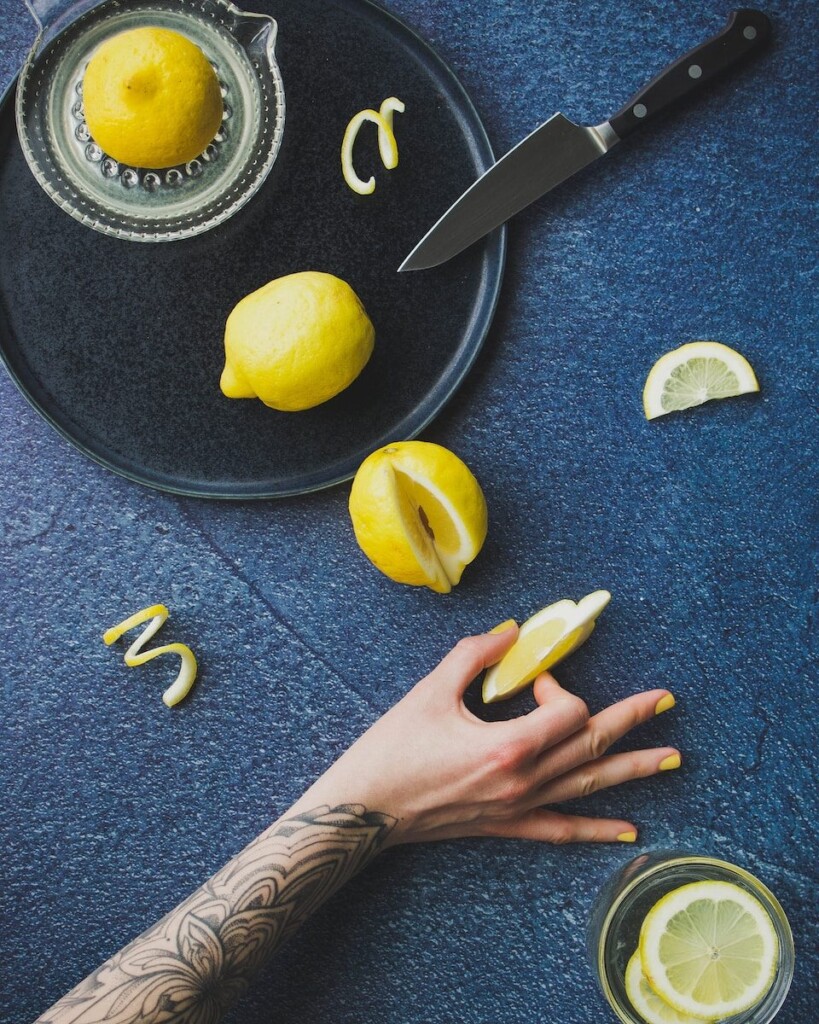
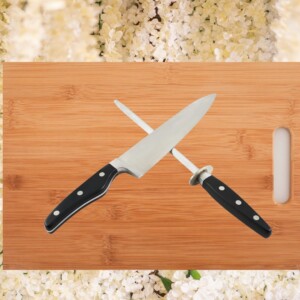
A dull knife requires more force to cut through food, which increases the risk of injury. To maintain a knife’s precision, use a sharpening stone or knife sharpener. Between thorough sharpenings, use a sharpening steel to touch up your knife.
When it comes to actually sharpening your knives, it will depend greatly on frequency of use but I recommend every 3-4 months for low to average use. When you make knife sharpening a more regular part of your kitchen routine, you’ll also start to get a much better sense of when they start to dull.
Different knives are designed for specific purposes, so it’s essential to select the right knife for the job. Consider blade size, flexibility, and edge type when choosing a knife for a cutting chore.
Most cutting tasks in the kitchen are achievable with a good chef’s knife. With that thought in mind, a blade that’s designed specifically for a purpose can bring more ease and precision to the cut. Using the right knives will encourage you to prep food with accuracy and confidence. I’m free of worries about how best to approach a cut when I use the right tool for the task at hand.
Choosing the right knives for your kitchen may seem like a daunting task when you consider how many knives exist on the market. If you have spent years buying the cheapest bargain basement knives that you could find, and are tired of crushing things instead of slicing them…STOP! Do yourself a favor and begin to accumulate the best knives available. You’ll thank me for it when you see what a difference a quality blade will make!
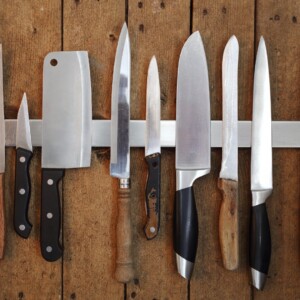
Proper cleaning and sanitation are critical to prevent contamination and maintain your knife’s durability. Immediately clean your knife after use and inspect it for any food debris that may have collected. Don’t toss a knife in with the utensils to soak it clean! When it comes to handling kitchen knives safely, that’s a recipe for disaster if you like your hands!
Your knives deserve the best care possible, and that means avoiding the dishwasher. Here are a few reasons why:
Heat and humidity can cause serious damage to both the steel and handle of your knife. Turbulence from the water jets can cause your knife to knock into other items in the dishwasher, damaging the blade’s edge. Detergents used in the dishwasher can dull or discolor your knife. Knives can scratch other items in the dishwasher, your fingers, and even the machine itself.
So what’s the best way to clean your knives? For most knives, hand-washing in hot, soapy water is the way to go. Just make sure to use hot tap water, not boiling water, to avoid any damage.
Knife blocks are a popular and convenient way to store your knife collection. They come equipped with various sized slots to fit your chef knife, serrated knife, and other common blades. A knife block serves as an accessible and practical storage method, and also allows for an attractive way to display your collection.
The slots on these blocks can harbor bacteria and cause your knife to dull over time. That’s why we recommend using a magnetic knife block for countertop storage. This type of knife block showcases your knives while preventing them from dulling or collecting bacteria.
While knife blocks work well for many people, they may not be the best option for everyone. They can take up valuable counter space, and the limited number of slots may not accommodate a growing knife collection.
For those with smaller kitchens or larger collections, a magnetic knife strip or in-drawer knife organizer might be more practical. When not in use, store your knives in a designated storage space such as a knife block or roll to prevent mishaps and increase their longevity.
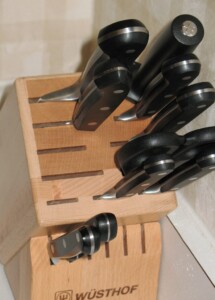
When it comes to handling kitchen knives safely, the knife is only as steady as the surface you cut on! I use a perforated rubber shelf liner cut to match the size of my cutting boards. The rubberized shelf liners are machine washable, so they can stay clean like the rest of my kitchen. In a pinch, a dampened kitchen towel folded to fit the cutting board and placed underneath can stop the slide. Don’t forget, a dull knife causes you to use more pressure to make a cut which, in turn, can make your cutting board move when cutting!
Some of these suggestions may seem redundant, but they’re worth repeating. Proper handling and cutting techniques are crucial for safe knife handling. Here are some safety guidelines to consider when you use hand-held knives:
Keep knives sharp: A sharp knife makes cutting easier and reduces the risk of unsafe pressure and angles while cutting.
Wear a cutting glove: Don’t be ashamed to wear a cutting glove. Hurting your pride hurts far less than hurting your body. A cutting glove will keep your hand safe from cuts.
Always cut away from yourself: This will prevent injury in case the knife slips.
Use the right knife for the job: Different cutting jobs require different knives. The wrong knife will make cutting difficult and increase the risk of injury.
Cut on a stable cutting board: A loose or wobbly cutting surface can easily cause knives to slip and injure employees.
Never grab a falling knife: This is important to remember, as it can cause severe injury.
Keep your eyes on the blade: This will enable you to notice if the knife starts to slip or is coming dangerously close to causing injury.
Carry the knife pointed down or in a scabbard: This will prevent you from falling onto sharp knife blades.
Never cover a knife: A knife that can’t be seen is a dangerous knife. Always keep it where it can be seen.
Don’t put a knife in a sink full of soapy water: Someone might stick their hand in the water and cut themselves. It’s best to wash the knife off immediately.
Keep the cutting area clean: Any liquids or byproducts on the floor create a slip risk, which is dangerous when handling knives.
Stay Focused: Always give cutting tasks your full attention and avoid distractions. Ignoring knife safety basics could turn one of your most-used kitchen tools into a hazard. If I had to rank any of the previous tips first for handling kitchen knives safely, I’d have to say…
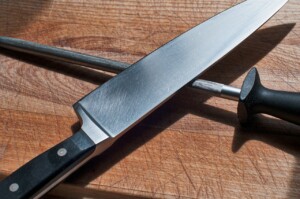
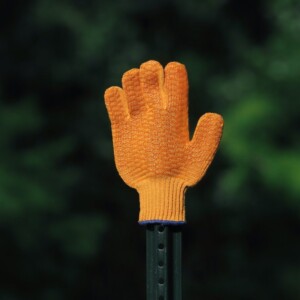
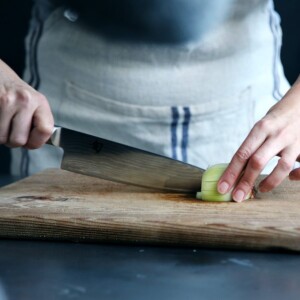
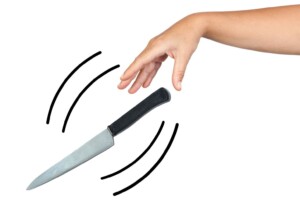
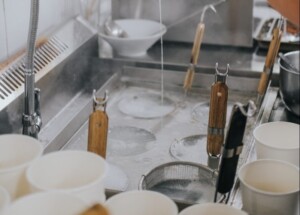
Are you enrolled in our Wellness Academy?
My Wellness Academy was created with better Health in mind. Your Health! With my guidance, your journey to a healthy lifestyle can be attained through continually learning about the many healthy choices that are available to you that you might not be aware of. If you can follow the tips that I provide in this course, success can be yours by forming new, healthier habits that could soon become a part of your daily life.
